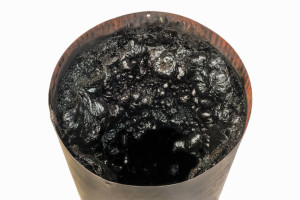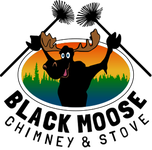 Chimneys bring their owners warmth and coziness year-round, but if they’re neglected for long, they can have quite the opposite effect. The good news is that by following the following safety tips, any fireplace owner can make their investment safe for the long haul.
Chimneys bring their owners warmth and coziness year-round, but if they’re neglected for long, they can have quite the opposite effect. The good news is that by following the following safety tips, any fireplace owner can make their investment safe for the long haul.
Tip #1: Check for Chimney Deposits
Chimney deposits are residue left over from the flames in your fireplace, although there are a variety of states, they appear most commonly as Soot, Creosote, and Glaze. Soot, a carbon-based texture that appears black or brown in color generally, is the most harmless of these deposits. Creosote usually begins as smoke, but ends up as a curly, flaky, and sometimes bubbly deposit. Finally, Glaze takes the form of a tarry substance that drips down chimneys, which make formations that look like black icicles. Due to the denseness of the substance, Glaze is the most difficult type of deposit to remove for fireplace owners.
Hiring a chimney sweep is the best prevention and solution for Chimney Deposits. Over the course of the chimney sweeping and inspection, a Chimney Safety Institute of America (CSIA)-certified professional will survey, document, and provide a report on the condition of your chimney.
Tip #2: Determine Your Best Level of Inspection
As a fireplace owner, you’re constantly in the know about your chimney’s appearance, but you may need an expert’s set of eyes to spot deeper issues that your fireplace faces. The National Fire Protection Association (NFPA) has delegated three levels of chimney inspections. Each level has a specific purpose and it is important for fireplace owners to be aware of the options they have when they request the services of a professional chimney sweep.
A basic Level 1 inspection can be implemented if there are no major underlying issues suspected by chimney owners. Level 1 inspection consists of visual inspection of all easily accessible areas of the fireplace system. Level 2 inspections are recommended when there are changes in chimney ownership, system efficiency, or appliance. If a major weather event or chimney fire has affected your system, then a Level 2 inspection is the way to go, especially if you are considering selling or buying a property. Level 2 Inspections incorporate careful video and picture scanning, a 66-point inspection, and a formal report. Level 3 inspections are only performed if a Level 2 inspection is not enough to determine the full amount of damage to the chimney. During a Level 3 inspection, a technician may remove parts of the system in order to pinpoint the source of any chimney problems.
Tip #3: Enlist an Expert for Fireplace Restoration
Your fireplace may be damaged due to weather conditions or previous ownership, but that is by no means the end of the road for your system. It’s not too late to take action: contact a CSIA and NFPA-certified technician to restore your fireplace and rebuild your firebox.
According to the CSIA, you can avoid chimney fires, carbon monoxide poisoning, and other hazardous incidents by investing in a profession CSIA Certified Chimney Sweep. As a fireplace owner you can prepare for the worst when you: 1) Check for Chimney Deposits, 2) Determine Your Level of Inspection, and 3) Enlist an Expert for Fireplace Restoration. By taking these tips to heart, fireplace owners can make sure that their fireplace is operating at peak performance all-day, every day.


